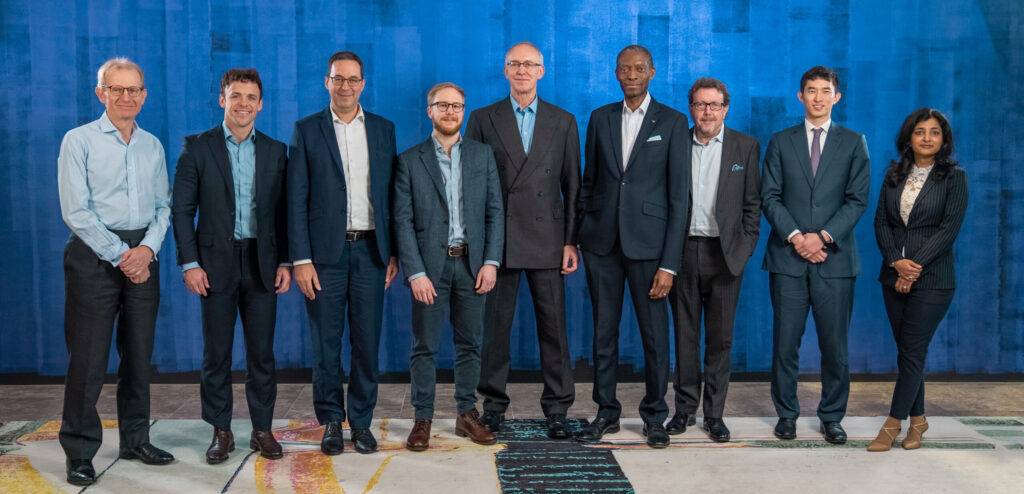The insurance industry has a long way to go in terms of offering customers seamless and personalised products, and the challenges of the past 18 months have been influenced by a “uniquely” different set of elements, said McCathron, as he spoke about his experiences across 30 years in the insurance industry, and why changes in the reinsurance industry amplified the situation.
Speaking specifically about Hippo’s journey, he said: “It’s been amazing to see how far we’ve come. Back then, you didn’t even have a carrier. There’s been a lot of evolution and change over these eight years, likely accelerating rather than slowing down.”


McCathron called 2023 ‘uniquely difficult’ compared to past tough years, because it was influenced by macro factors like climate and supply chain issues, and that despite the absence of a major named storm, the P&C sector faced significant reinsurance challenges for catastrophic exposure.
He said: “It was probably the most difficult quarter I’ve experienced in my career. What made 2023 particularly challenging, especially for early-stage companies that rely heavily on reinsurance, was a shift within the reinsurance market in the years leading up to it. Without delving too deep into the details, there are two primary types of reinsurance: quota share and excess of loss.
“Quota share involves proportional participation and first-dollar risk, while excess of loss covers risks above a certain threshold. The trend had shifted towards buying net quota share, which means quota share with a cap for catastrophes, and then excess of loss coverage above that cap.”
He went on to explain that natural large weather events were not to blame and the challenges were due mainly to the insurance structure facing a large number of lower key incidents that resulted in a higher frequency of claims that fell below the reinsurance threshold. This dilemma was what cased Hippo to pause all new business movements for several months.
“In 2023, there weren’t any major events like a big hurricane or winter storm. Instead, there were numerous small events, each hitting the net quota share cap but staying below the excess of loss reinsurance threshold. Companies like Hippo found themselves without adequate coverage for these types of events, which impacted our balance sheet and cash position significantly. We had plenty of cash to weather the storm, but for many, it posed existential threats, forcing significant changes within numerous companies.”

Technology and innovation creating more stability in the industry
Falchuk then asked McCathron about how he and his leadership team will be achieving long-term viability, considering the continued instability of the market and climatic conditions.
He said: “I believe we’re at an inflection point. One critical aspect of insurance is that it’s a product you manufacture without knowing the final cost until years later. If you get it wrong, the consequences can be significant. Recognising and correcting mistakes, whether due to company errors or changing macro trends like inflation and labor costs, takes time, especially with regulatory requirements for filing changes in most states.”
He pointed out that knee-jerk reactions to difficult situations often cause more damage, and spoke about how insurance companies often respond by swinging the pendulum aggressively, but said that technology and innovation were key tools in helping companies to manage market fluctuations.
“A trend I see changing is the use of technology to stay ahead, using AI and data analytics to react more quickly to changes. This is an advantage for insurtech companies like Hippo. In the past few years, we’ve completed and implemented 200 rate filings, a feat difficult for traditional insurance companies due to their tech stacks.”
McCathron said that diversification was also crucial—not just geographically but in business operations. He said that Hippo Home Insurance is a relatively small part of the company’s operations and that the insurtech has a fronting carrier supporting almost 20 different MGAs, providing them with rated paper to conduct business.
“We have an aggregator, First Connect, that builds technology for independent agents, offering market access and consumer-grade technology. Additionally, we have our own agency, selling various products like auto, flood, and life insurance. Our smart home offering focuses on proactive prevention to help customers avoid claims. This diversification provides stability during fluctuating years and has significantly improved our loss performance while growing our portfolio.”
Navigating a challenging market through strategy
In March 2024, Hippo reported that it had turned a corner financially speaking after it reported a significant jump in its total generated premium (TGP) and revenue in the final quarter and full year of 2023. According to reports, Hippo’s improvements were mainly attributed to increases in the scale of the firm’s Services and Insurance-as-a-Service (IaaS) segments, combined with structural changes in the Hippo Home Insurance Program (HHIP).
The actions, which are aimed at reducing risk exposure and enhancing profitability, means Hippo may well achieve its profitability goals ahead of schedule.
McCathron spoke about his strategy for the company’s growth, saying that growth should focus on profitability. “When we started Hippo, we aimed to make homeowner’s insurance accessible to the mass market, but we overlooked the diversity in segments, profitability thresholds, demographics, and psychographics, making it challenging to be profitable across the board.”
He said that Hippo has concentrated its home insurance product by targeting their ‘generation better’ customers—those who seek a partner in protecting their homes. These customers are keen on IoT devices, share extra data, and actively engage in Hippo Home Care to make their homes more loss-resistant.
the companies that are really successful are remembering the fundamentals, as well as remembering there’s a customer at the end of this. The customer has expectations and we need to meet those expectations to see success.”
Rick McCathron
Additionally, they have established strategic partnerships with home builders. They have created technology to quote homes before they’re built, ensuring they have insurance coverage when completed. McCathron pointed out that these changes are crucial in states like California, where getting homeowners insurance for new homes can be difficult, due to the mass withdrawal of market operators.
“By narrowing our focus to these areas, we concentrate on profitable opportunities while still targeting significant markets. For instance, with 1.5 million new homes built each year, the new home market remains a substantial opportunity.”
He also spoke about the withdrawal of insurance providers from California, saying that much of it was caused by a vicious cycle of rate filings and presumed cost.
He argued: “The reinsurance cycle and the pricing cycle for primary carriers or MGAs is not aligned, and so you have a situation where reinsurers will be losing money and then the reinsurers change the price that they charge the primary carriers or the MGAs in order to provide reinsurance to them.
“Then the primary carriers in the MGAs actually have to file that increased cost into their rate filings and it requires regulatory approval. Reinsurers don’t require regulatory approval. If I’m a reinsurer, I want to change my price from 10% to 30%. They could do that at the treaty, which is once a year. If I want to take the delta of 20% and bake it into my pricing, I have to file that. And it could take in some states two, three months in other states two years.”
Insurance products not serving customer requirements
He added that today’s current market does not fit the needs of the customer, and that seismic changes are required to address the evolving space, where risks are changing and current products no longer provide adequate protection and that customisation is the key to success in new solutions.
McCathron also stated the case for embedded products and said that despite the setbacks that 2022 and 2023 inflicted on the insurance space, that it’s important to focus on key, customer centric innovations.
He concluded: “I think emphatically it [insurance] does not meet the needs, the needs of the customer today. That embedded nature really makes a difference by easing the ability for the customers and the industry. We were making really good progress, and then we had 2022 and 2023 that made us all pause and focus on the fundamentals instead. But the companies that are really successful are remembering the fundamentals, as well as remembering there’s a customer at the end of this. The customer has expectations and we need to meet those expectations to see success.”
Richard McCathron was a main stage speaker at Insurtech Insights USA 2024, which took place on June 5th and 6th at the Javits Center in New York.










